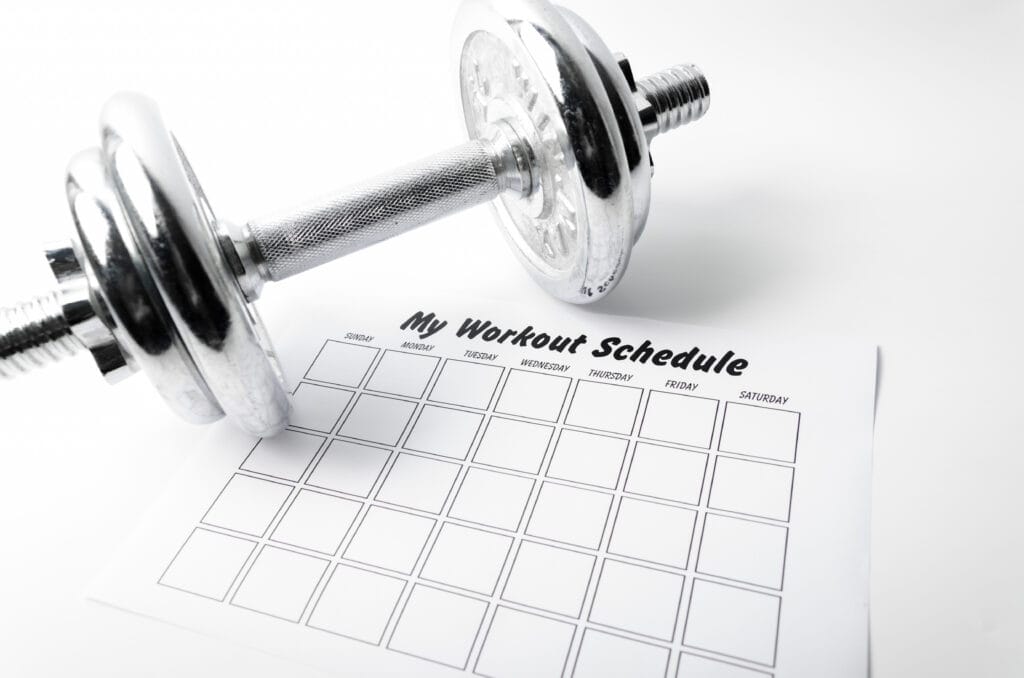In today’s chaotic world, squeezing in a workout can be challenging. If you have work deadlines to meet, family commitments and don’t forget, those Netflix binge temptations. Then staying consistent with exercise often gets pushed down the list.
I know because I have been there. Despite fitness being a big part of my life, through professional sport and fitness training, I did fall into the trap of thinking I did not have time to exercise.
However, I got a grip of myself and made time – making my exercise routine a top priority.
But here’s the kicker—regular physical activity isn’t just good for your body; it’s your golden ticket to better sleep, reduced stress, and a sharper mind.
So, if your busy schedule makes hitting the gym feel impossible, this guide is for you.
We’ll cover practical tips, science-backed strategies, and even how to sneak in fitness during your lunch break or between commercial breaks. It’s time to level up and make exercise a sustainable part of your daily life.
How Many Times a Week Should You Work Out?
There is no magic number for how many times you need to workout. It all depends on your fitness goals and situation (time-wise).
According to the American Heart Association, adults need to aim for 150 minutes of moderate-intensity exercise or vigorous activity for 75 minutes every week.
So, if you’re just getting started, an intense exercise routine 1-2 days a week is a great start. Over time, as you build the discipline to consistently participate in regular exercise, you can increase your workout schedule.
If building muscle or losing weight is your goal, include at least two strength training sessions that hit major muscle groups like your chest, legs, and back. This will boost muscle growth and help maintain muscle during a fat-loss phase.
Remember, you can do low-intensity physical activity on rest days. Going for a walk is a great example of low-intensity activity that you can add to your weekly routine.
What’s the Best Way to Schedule Workouts?

Creating a sustainable workout routine requires a game plan. Whether you’re a morning person or more productive after work, find a time slot that you can stick to.
Prioritise exercise as an essential part of your day, not just if you can fit it in. Having the mindset to show up for your workout in the same way as you turn up for your job will create a disciplined weekly workout routine.
Decide the type of physical activity in your workout plan. Different days might mean different forms of exercise, such as:
- Running
- Weight lifting
- Walking
- Playing sport
Whatever workout plan you decide on will be personal and depend on your fitness goals.
Also, consider the following …
If your exercise routine focuses on running (which has cardiovascular health benefits), make sure to start slowly. Begin with low intensity and practice good running technique to avoid injuries. You can then increase the speed and distance fitness level improves.
You may prefer to workout in the gym and lift weights. Make sure to start with light weights and high repetitions. This will help you learn good lifting techniques.
Also, organise what body parts you intend to train on various days. While it’s good to adapt your own workout split, at the beginning, you may want to use one of these workout plans:
- Full-body workout
- Upper / lower split
- Bro split
- Push / pull / leg split
Of course, you might decide to combine both (running and weight lifting). Make sure to use the following physical activity guidelines when you begin an exercise program:
- Vary intensity levels
- Include active rest days
- Have time to eat after exercising
- Have rest day(s)
- Get sufficient sleep
How Can You Fit Exercise Into a Busy Schedule?

If your daily schedule is already packed tighter than a carry-on bag for a two-week trip, getting creative is key.
Now, I realise that for some (including myself), life can genuinely be very busy throughout the day. Especially if you work full-time and have kids to take care of. But you will always have some exercise time available if being fit is a priority.
Here’s how:
- Morning Workouts: Get your exercise done before you start the working day.
- Use Your Lunch Break Wisely: A 30-minute walk can be a game-changer.
- Active Commutes: If possible, cycle to work or jog if you live close enough.
- Sneak in Fitness at Home: Do some bodyweight exercises at home or buy some dumbbells
- Weekend Warrior: Focus on longer workouts on weekends if weekdays are too hectic.
The idea is to make exercise a non-negotiable part of your daily routine. After all, working out regularly isn’t just for fitness fanatics—it’s for everyone who wants to feel good and stay healthy.
How Do You Make Workouts Enjoyable?

There are some people who encourage others to make exercise fun, and this can be good advice. However, keeping fit will require you to possibly do specific exercises that you might not enjoy that much.
There are many benefits to doing less enjoyable vigorous exercise, and I will discuss these in a future blog post.
However, all your exercise doesn’t have to feel like a chore! The trick is to find what makes it fun for you. Some guys love working out in the gym, while others prefer outdoor activities. Here are a few ideas:
Join a fitness class
This can be an enjoyable social event, such as working out with a group of friends. Although do not rely on only going when your mates go.
Try a new sport

Trying a new sport, such as Basketball, rock climbing, or Tennis, is a great way to learn new skills and challenge yourself.
Switch up your routine
Variety can keep things interesting and challenging and avoid boredom. Play a team sport on one day and weight training on other days.
How to Avoid Common Workout Mistakes
Nobody’s perfect, but there are a few pitfalls you’ll want to steer clear of:
- Doing the Same Workout Every Day: Repeating the same routine non-stop can lead to psychological fatigue. Switching up a strength training exercise routine can keep things fresh.
- Skipping Rest Days: Active rest (like a leisurely walk) is essential to give your muscles time to recover.
- Setting Unrealistic Goals: Start small and build gradually to avoid burnout.
- Neglecting Nutrition: Fuel your workouts with balanced meals. There are various diets that you can follow, but in general, eat enough protein, healthy fats, and an appropriate amount of carbs within your calorie requirements.
Note: Getting fit and staying in good shape is a marathon, not a sprint. Pace yourself and enjoy the process.
How to Stay Accountable to Your Workout Routine
Sticking to a workout program when life gets chaotic isn’t easy, but accountability helps. Find a workout buddy who can text you, “See you at the gym?” when you’re tempted to skip. No friend available? Join an online fitness community or group class to stay connected and motivated.
Keeping a record of your progress is another great way to stay motivated. There are plenty of fitness apps to log your workouts and celebrate milestones—whether it’s doing an extra push-up or shaving 30 seconds off your 5K time.
Summary: Make Fitness a Lifelong Habit
Fitting exercise into your daily schedule might take some effort, but it pays off big time in terms of your physical and mental health. So, whether you aim to lose weight, build muscle, or simply move more, the key is consistency.
Not every workout will be perfect, and that’s okay. What matters is showing up—even if all you have time for is a quick session during your lunch break. Adapt your routine when needed, and don’t hesitate to contact a certified personal trainer or health coach if you need extra guidance.
Ultimately, making exercise a part of your daily life is about progress, not perfection. So throw your gym bag by the door, set those alarms, and get moving. Your future self will thank you.


